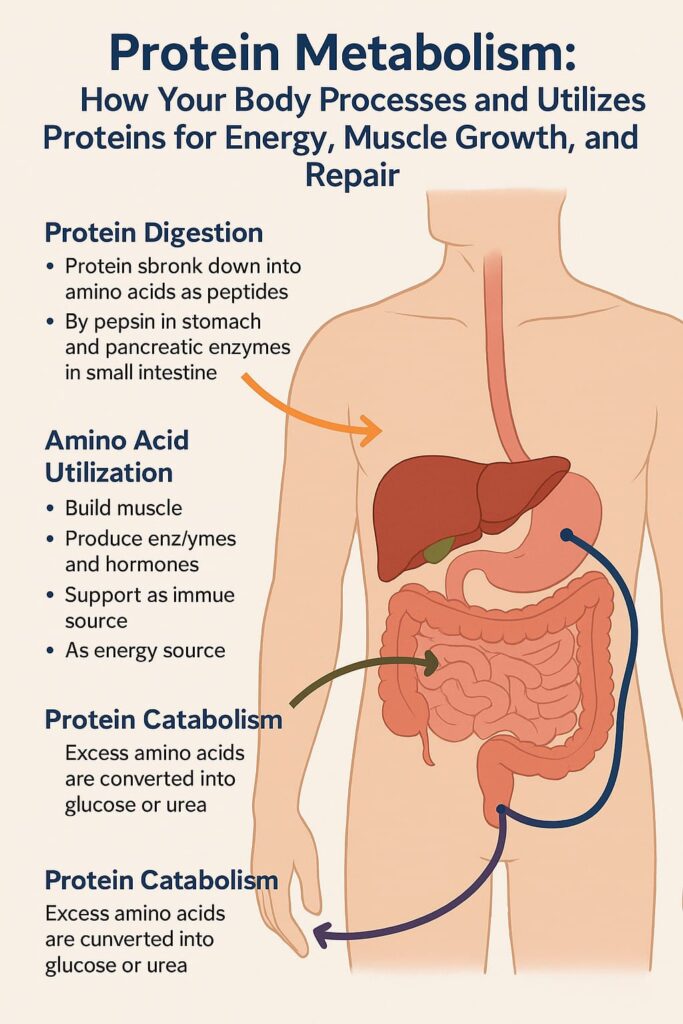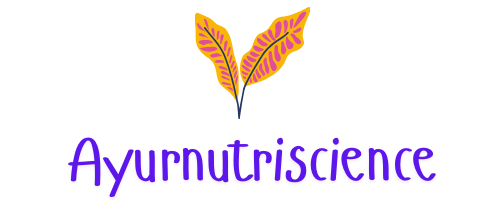
Proteins are vital macronutrients that act as hormones and enzymes, aid in tissue growth and repair, and support immune system function. Maximizing energy production, health, and growth as well as the breakdown, use, and primary functions of proteins.
Learn about the processes and assets involved in the breakdown of proteins, as well as how and where this process takes place in the human organism.
How do proteins get metabolised
The way the body digests, absorbs, and utilizes the proteins it eats is referred to as “protein metabolism.” It involves several steps:
- The process of absorption of proteins in the stomach and small intestine
- The amino acid absorption occurs in the bloodstream. The body uses amino acids for energy and muscle repair, while waste products are excreted as by-products of protein metabolism.
Where can protein metabolism take place?
The stomach is where the breakdown of proteins mostly takes place. The primary pathways for breaking down proteins are the use of hydrochloric acid and an enzyme called pepsin. The enzymes produced by the pancreas, trypsin and chymotrypsin, further break down proteins into amino acids in the small intestine.
Over time, the liver transforms it into glucose (gluconeogenesis), which is an amino acid. The final by-product of protein metabolism is excreted as urea. Amino acids were utilized for the creation of proteins and energy production throughout different tissues and muscles, depending on the needs of the body.
How do proteins get metabolized?

Protein digestion: protein breakdown. Protein is broken down by the body after a meal that contains high-protein foods, including meat, eggs, poultry, and legumes. To aid in digestion, pepsin and other stomach acids break down stomach protein. Protein is further broken down into amino acids and peptides throughout the intestine by enzymes known as trypsin and peptidases.
Absorption of amino acids into bloodstream
After being broken down, amino acids are taken up by the lining of the gut and sent into circulation. They are then sent to other tissues to carry out distinct tasks. Amino acids are necessary for protein synthesis and for the healing of muscle tissues. Additionally, if they’re insufficient in fats and carbohydrates, they are used for energy.
The Affect of Metabolism and Its Factor
Let’s know the factors which body metabolises protein effectively
Several factors influence how effectively your body metabolizes proteins
- Age: As we age, protein breakdown slows down and muscle synthesis does.
- Dietary inputs: metabolism enhances through high-protein diets. Muscle loss leads to low -intake
- Exercise: protein synthesis increases resistance training.
- Hormones: The stress hormone cortisol increases protein breakdown, and insulin and growth hormone support protein metabolism as well.
- Digestive health: for absorption of amino acids, proper enzyme function is essential.
Conclusions
Our comprehensive information on protein breakdown will help you understand the health benefits of proteins and how they support the tissues and wear and strain on our bodies. It will also help you optimize your intake for digestion and absorption and improve your metabolism. It is only a biological process.
The body uses it to rebuild, repair, and sustain life. Through their procedures and digestion, amino acids aid in physical strength, growth, energy, and productivity. That’s all the part nutrition plays in maintaining health and longevity.
